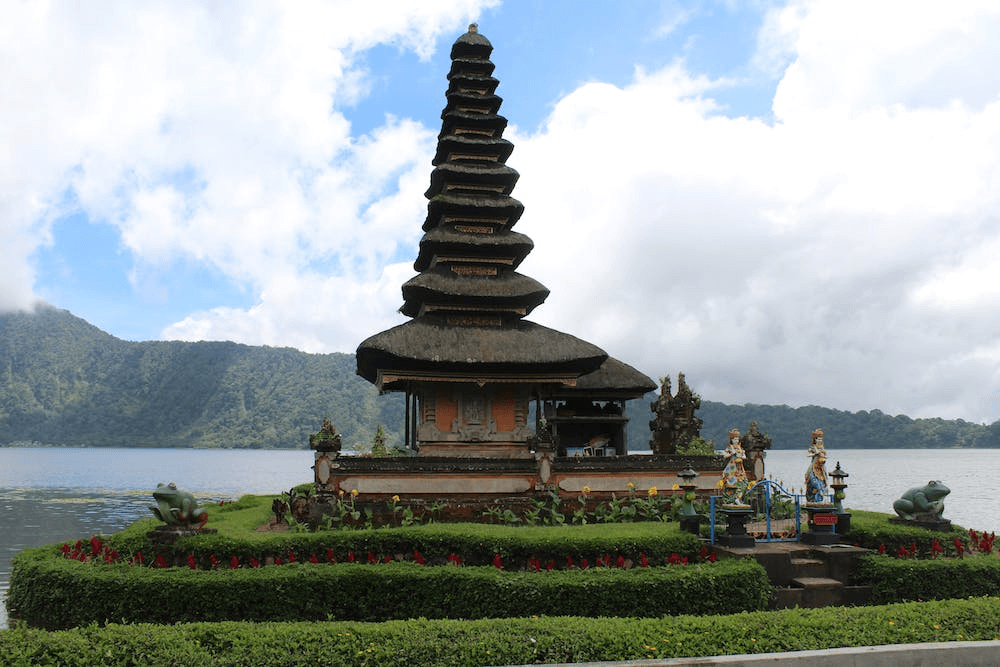📑Table of Contents:
- Understanding Bali’s Climate
- The Best Months to Visit Bali: A Month-by-Month Breakdown
- January: Embrace the Tranquility
- February: Experience the Green Season
- March: Cultural Immersion During the Shift
- April: The Return of the Sun
- May: The Sweet Spot
- June: Kicking Off the Peak Season
- July: Perfect Weather and Cultural Richness
- August: Bali at Its Best
- September: Enjoying the Tail End of the Dry Season
- October: A Quiet Retreat Before the Rains
- November: The Start of the Wet Season
- December: Festivities and Tropical Showers
- Special Events and Festivals
- Tips for Planning Your Trip
Bali, often hailed as the “Island of the Gods,” is a destination that captivates visitors with its stunning natural beauty, rich culture, and warm hospitality. From idyllic beaches to vibrant temples, Bali offers something for every traveler. However, deciding when to visit can greatly affect your experience. Bali’s tropical climate and a calendar full of festivals mean that different times of the year can offer varied experiences. This guide will help you pinpoint the best time to visit Bali, considering factors like weather, tourist density, activities, and cultural events.

Understanding Bali’s Climate
Bali’s tropical climate ensures warm temperatures throughout the year, but it is divided into two main seasons: the dry season and the wet season.
- Dry Season (April to October): Bali’s dry season is the most popular time for tourists. With clear skies and plenty of sunshine, temperatures typically range from 26-30°C (79-86°F). This season is ideal for outdoor activities such as beachgoing, hiking, and sightseeing, as the weather is consistently pleasant and the humidity is lower.
- Wet Season (November to March): The wet season brings more rainfall and higher humidity. While temperatures remain warm, averaging between 27-32°C (81-90°F), frequent rain showers can make outdoor activities more challenging. However, the wet season also has its perks, such as fewer tourists, more affordable accommodations, and a lush, green landscape.
The Best Months to Visit Bali: A Month-by-Month Breakdown
Choosing the right month for your Bali trip depends on your preferences for weather, crowd levels, and activities. Here’s a detailed look at what each month has to offer:
January: Embrace the Tranquility
January is one of the quietest months in Bali, as it falls in the middle of the wet season. Rain is frequent, especially in the afternoons and evenings, but the island’s landscapes are vibrant and green. This month is ideal for travelers who prefer a peaceful retreat without the tourist crowds. It’s a great time to enjoy indoor activities like yoga, spa treatments, and cooking classes, or to explore Bali’s cultural and historical sites at a relaxed pace.
February: Experience the Green Season
February continues the trend of lush scenery and occasional downpours. While rain might be a deterrent for some, it can also create a more intimate and serene experience. Surfing enthusiasts can take advantage of the swells on the east coast, which are particularly strong during this time. With fewer visitors, February offers a chance to experience Bali’s natural beauty and cultural attractions in a more laid-back setting.
March: Cultural Immersion During the Shift
March marks a transition from the wet to the dry season, with rainfall gradually decreasing. This month offers a unique cultural experience with the celebration of Nyepi, the Balinese New Year. Nyepi, also known as the Day of Silence, is a day of reflection and meditation, during which the entire island shuts down. It’s a rare opportunity to experience Bali in complete stillness, offering a profound contrast to the usual bustling atmosphere.
April: The Return of the Sun
April ushers in the start of the dry season, with the return of sunny skies and warm, comfortable weather. This month is perfect for those looking to enjoy Bali’s beaches before the peak tourist season begins. The decrease in humidity makes it a great time for outdoor adventures, such as trekking through the rice terraces or exploring the island’s numerous waterfalls. Additionally, April often sees the start of Bali’s festival season, including the Bali Spirit Festival, which celebrates yoga, music, and dance.
May: The Sweet Spot
May is often considered one of the best times to visit Bali. The weather is almost perfect, with plenty of sunshine and moderate temperatures, making it ideal for both beach lovers and those looking to explore the island’s cultural and natural zttractions attractions. Tourist numbers are still relatively low, allowing for a more relaxed experience at popular spots like Ubud and Seminyak. May is also a fantastic time for water activities like snorkeling and diving, as the seas are calm and visibility is excellent.
June: Kicking Off the Peak Season
June marks the beginning of Bali’s peak tourist season, with consistently dry and sunny weather. This is a popular time for festivals, including the Bali Arts Festival, which showcases traditional dance, music, and crafts from across the island. While the increase in tourists can make popular areas more crowded, the vibrant atmosphere and range of activities available make it a lively time to visit. To secure the best accommodations and avoid higher prices, it’s advisable to book well in advance.
July: Perfect Weather and Cultural Richness
July is one of the most popular months to visit Bali, with excellent weather and a wide array of cultural events. The beaches are buzzing with activity, and tourist hotspots are vibrant with visitors. This is also a great time to witness traditional Balinese ceremonies and festivals, which often take place in July. While the island is bustling, there are still quieter areas to explore, such as the northern coast or the lesser-visited inland regions.
August: Bali at Its Best
August is peak season in Bali, offering perfect weather for all types of activities. Whether you’re surfing in Kuta, exploring temples in Ubud, or simply lounging on the beach, the sunny skies and warm temperatures make it an ideal time to visit. However, with the increase in visitors, popular areas can become crowded, and prices for accommodations and activities are higher. It’s wise to plan and book your trip well in advance if you intend to visit during this time.
September: Enjoying the Tail End of the Dry Season
September is an excellent time to visit Bali, as it offers the benefits of the dry season with fewer crowds. The weather remains warm and sunny, making it perfect for beach days and outdoor adventures. As the peak season winds down, you can enjoy a more relaxed atmosphere and potentially lower prices on accommodations. September is also a great time for diving and snorkeling, with the waters still calm and clear.
October: A Quiet Retreat Before the Rains
October signals the end of Bali’s dry season. While the weather is still mostly pleasant, there’s a slight increase in rainfall as the month progresses. This is a quieter time to visit, with fewer tourists and a more laid-back vibe. October is ideal for those who want to explore Bali’s cultural sites and natural attractions without the hustle and bustle of the peak season. The Bali Vegan Festival, held in Ubud, is a highlight for health-conscious travelers and those interested in sustainable living.
November: The Start of the Wet Season
November marks the beginning of Bali’s wet season, bringing more frequent rain showers and higher humidity. Although outdoor activities might be limited, this is a wonderful time to enjoy Bali’s serene and verdant landscapes. The reduced tourist traffic means that you can explore the island at a leisurely pace, with fewer crowds and lower prices. November is perfect for travelers who enjoy a quieter atmosphere and don’t mind the occasional rain.
December: Festivities and Tropical Showers
December in Bali is a mix of tropical rains and festive celebrations. While the wet season is in full swing, the island is alive with holiday spirit, particularly around Christmas and New Year’s Eve. Despite the occasional downpours, there are still plenty of opportunities to enjoy Bali’s beaches, culture, and nightlife. December is a busy time for tourism, so it’s important to book your accommodations and activities in advance if you plan to visit during the holiday season.
Special Events and Festivals

Bali’s rich cultural heritage is reflected in its numerous festivals and events throughout the year. Timing your visit to coincide with these events can offer a deeper insight into the island’s traditions.
- Nyepi (March): Nyepi, or the Day of Silence, is a unique Balinese Hindu celebration that marks the start of the new year in the Balinese Saka calendar. The entire island comes to a standstill, with no flights, no travel, and no noise, offering a rare moment of reflection and tranquility.
- Galungan and Kuningan (Dates Vary): Galungan and Kuningan are significant religious festivals in Bali, celebrated over ten days to honor the victory of good (dharma) over evil (adharma). The celebrations include temple rituals, traditional dances, and offerings, providing visitors with a glimpse into Balinese spirituality.
- Bali Arts Festival (June/July): The Bali Arts Festival is a month-long celebration of Balinese culture, featuring daily performances of traditional music, dance, and art. This festival is a great opportunity to immerse yourself in the island’s rich cultural heritage.
- Bali Kite Festival (July/August): Held in Sanur, the Bali Kite Festival is a visually stunning event where teams from different villages compete to fly elaborate kites, some of which are several meters long. The festival is rooted in Balinese traditions and is a must-see for visitors during this time.
- Bali Spirit Festival (April): The Bali Spirit Festival is a global celebration of yoga, music, and dance. It attracts participants from all over the world and offers a unique blend of wellness practices, cultural exchanges, and musical performances.
Tips for Planning Your Trip
To make the most of your Bali adventure, here are a few tips:
- Book Early for Peak Season: If you’re planning to visit during the peak season (June-August or December), make sure to book your accommodation, flights, and activities well in advance to avoid higher prices and ensure availability.
- Pack Appropriately: Bali’s tropical climate means you should pack lightweight, breathable clothing. If visiting during the wet season, a waterproof jacket and footwear will come in handy for sudden rain showers.
- Be Flexible: Bali’s weather can be unpredictable, especially during the wet season. Plan some indoor activities, like spa visits or cooking classes, as a backup in case of rain.
- Respect Local Customs: Bali is deeply rooted in its cultural and religious traditions. When visiting temples or participating in local ceremonies, be sure to dress modestly and follow the guidelines for proper behavior.

Final Verdict!
Bali is a destination that offers something special throughout the year. Whether you’re drawn to its sun-drenched beaches, its vibrant festivals, or its tranquil retreats, Bali’s diverse landscape and rich culture promise an unforgettable experience.
By choosing the best time to visit based on your preferences and interests, you can make the most of your journey to this magical island. So, start planning, pack your bags, and get ready to discover the wonders of Bali.





